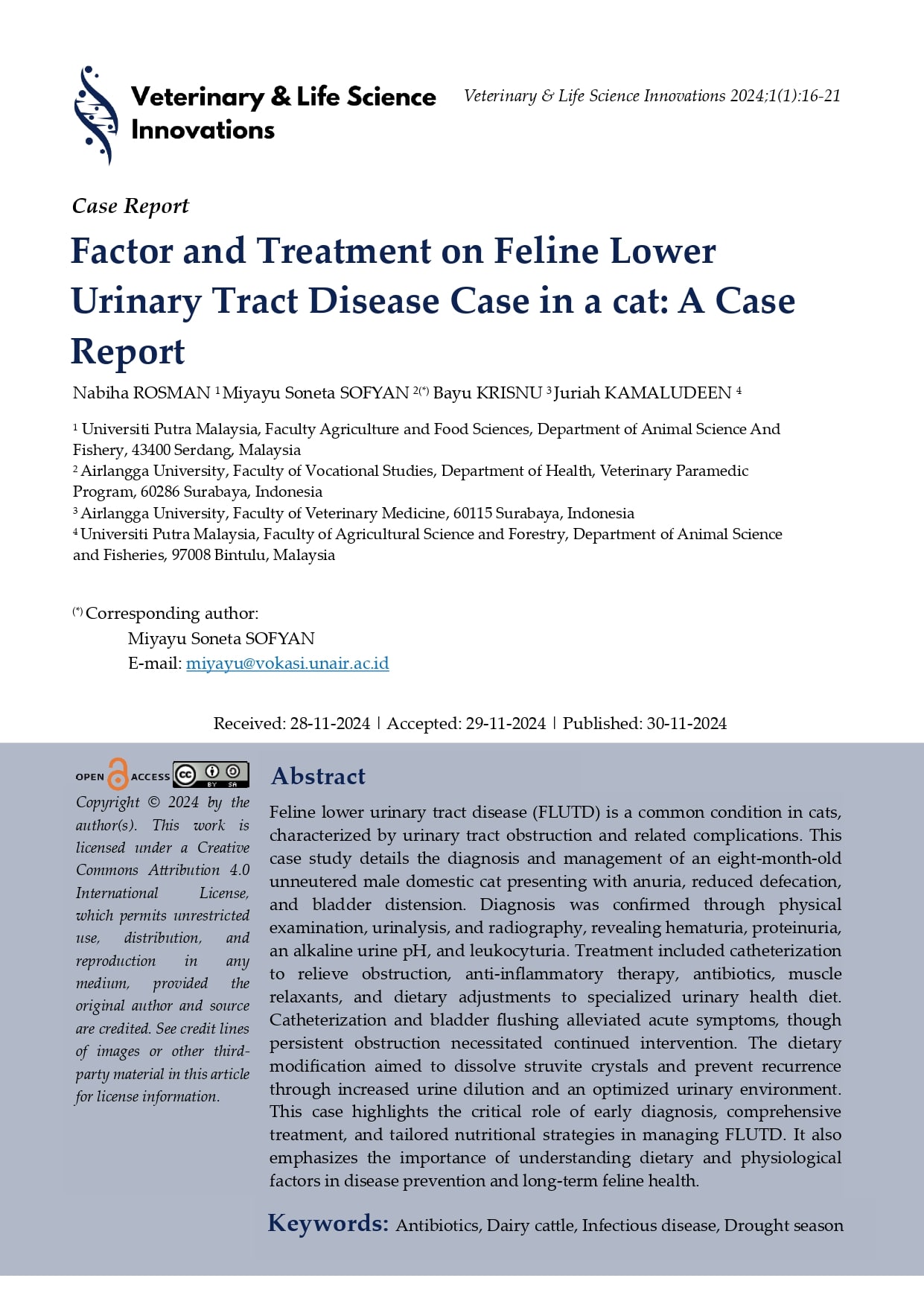Factor and Treatment on Feline Lower Urinary Tract Disease Case in a cat: A Case Report
Keywords:
Antibiotics, Dairy cattle, Infectious disease, Drought seasonAbstract
Feline lower urinary tract disease (FLUTD) is a common condition in cats, characterized by urinary tract obstruction and related complications. This case study details the diagnosis and management of an eight-month-old unneutered male domestic cat presenting with anuria, reduced defecation, and bladder distension. Diagnosis was confirmed through physical examination, urinalysis, and radiography, revealing hematuria, proteinuria, an alkaline urine pH, and leukocyturia. Treatment included catheterization to relieve obstruction, anti-inflammatory therapy, antibiotics, muscle relaxants, and dietary adjustments to specialized urinary health diet. Catheterization and bladder flushing alleviated acute symptoms, though persistent obstruction necessitated continued intervention. The dietary modification aimed to dissolve struvite crystals and prevent recurrence through increased urine dilution and an optimized urinary environment. This case highlights the critical role of early diagnosis, comprehensive treatment, and tailored nutritional strategies in managing FLUTD. It also emphasizes the importance of understanding dietary and physiological factors in disease prevention and long-term feline health.

Downloads
Published
Issue
Section
License
Copyright (c) 2024 Veterinary & Life Science Innovations

This work is licensed under a Creative Commons Attribution-NonCommercial-ShareAlike 4.0 International License.
Veterinary & Life Science Innovations provides open access to ensure that the information and findings in the articles are beneficial to all. All content of this journal article can be accessed and downloaded freely, at no cost, in accordance with the Creative Commons license applied.







